There is nothing quite like stepping foot outside in the early morning, soaking in the fresh air, and getting to work in the garden. You get to listen as the world wakes up around you. Hear the sounds of the birds, squirrels, insects, and other native pollinators settling into their morning routines.
In North America, there are thousands and thousands of pollinators. From bees to hummingbirds and everything in-between, the continent is teeming with animal life that helps plants grow.
Why Are Native Pollinators Essential?
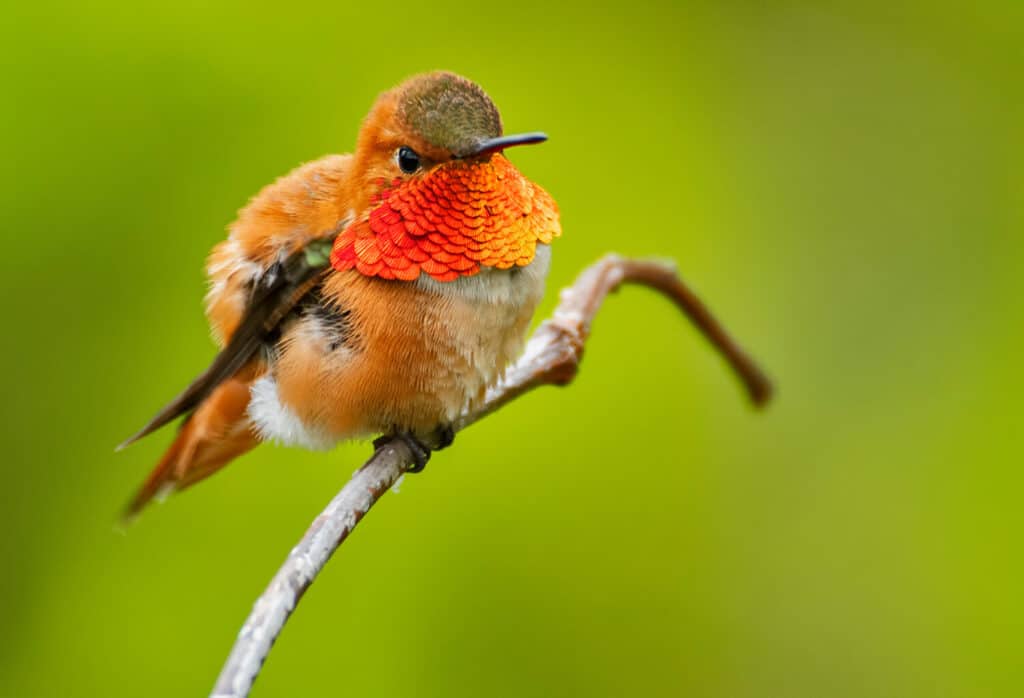
Rufous hummingbirds have bright red collars that they puff up for mating.
©punkbirdr/Shutterstock.com
Without native pollinators, North America would not have the floral diversity that is currently does. These animals adapted over thousands of years to work in harmony in this ecosystem. Plus, there are a wide variety of them, which means that disease and pests are very unlikely to wipe out all of them at once. Plus, native pollinators provide important food sources for other animals in North America.
Threats Native Pollinators Face

Honeybees destroy the populations of native bees.
©yod 67/Shutterstock.com
In North America, native pollinators face a variety of threats. The threats include habitat loss, pesticide exposure, capitalism created climate change, and disease. Plus, the introduction of invasive species such as the honeybee has led to declining numbers of native species that pollinate.
To clearly state it, honeybees of any species are invasive to the North American continent. They are inefficient pollinators humans introduced under the misconception that they can change ecosystems at will. The enjoyment of honey is not a sufficient reason to keep the bees on the continent and their populations must be culled to make room for native species to thrive once again.
10 Native Pollinators in North America
While there are thousands of species of native pollinators on the North American continent, lets focus on 10.
Monarch Butterfly (Danaus plexippus)

Monarch butterflies love milkweed flowers.
©Nancy J. Ondra/Shutterstock.com
The first native pollinator on the list is the Monarch butterfly. The species is a milkweed variant that also goes by common tiger, wanderer, and black-veined brown. The butterfly migrates from the north and central parts of the U.S. and southern Canada to Florida and Mexico in the late-summer and autumn.
The butterflies pollinate a variety of flowers, though the larvae only eat milkweed, including:
- Thistle
- Wild Carrot
- Teasel
- Lilac
- Red Clover
Rufous Hummingbird (Selasphorus rufus)
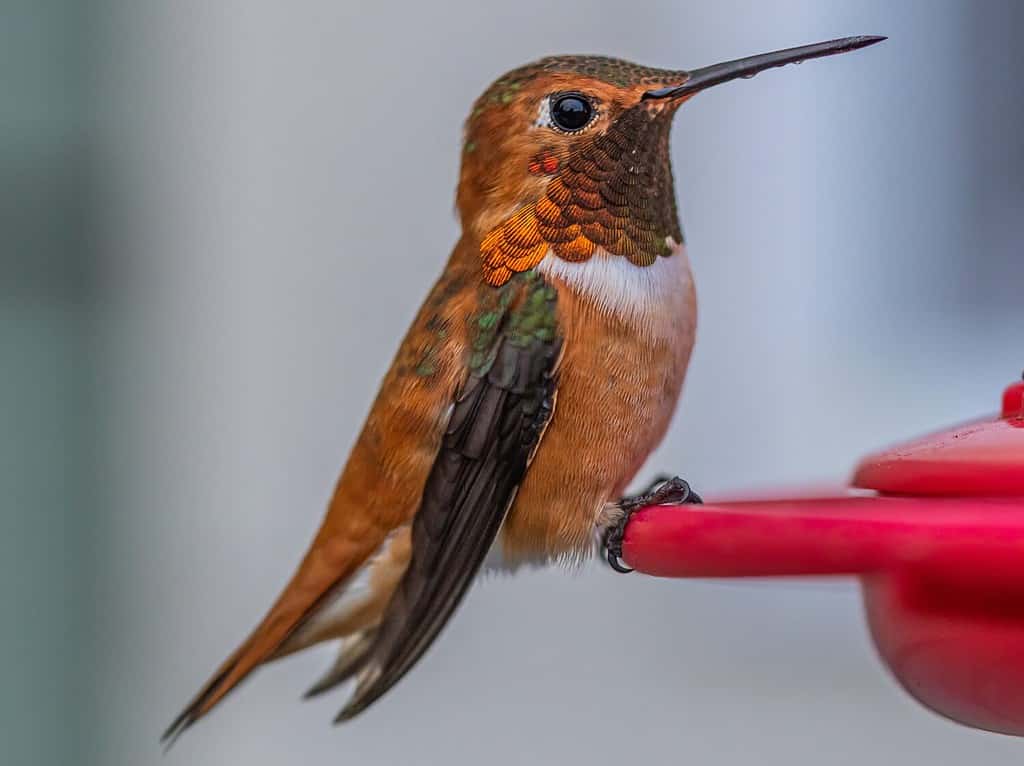
Hummingbirds can fly in stormy weather.
©Panduh Productions/Shutterstock.com
The Rufous hummingbird is a fairly small species that has a slender and nearly straight bill. The animals fly fast and dart from flower to flower with wonderful maneuverability. These birds will chase other hummingbirds away from their food sources and migrate around the country. During migration the native pollinators fly through mountain meadows as high as 12,600 feet. They winter in Mexico. The animals feed on nectar from a variety of flowers.
Little Brown Bat (Myotis lucifugus)
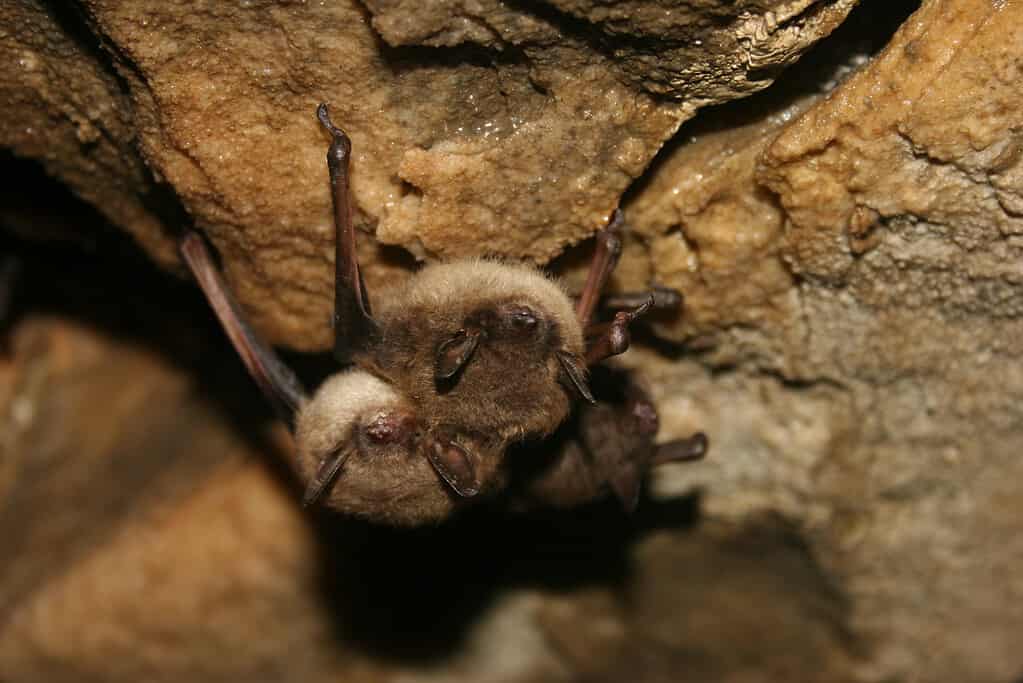
Bats use echolocation to hunt.
©U.S. Fish and Wildlife Service Headquarters / Public domain – License
The first endangered native pollinator on this list, the little brown bat is crucial for night-blooming flowers. The animals forage twice a day, once at dusk and once before dawn. The bat forages for insects on shrubs and other vegetation. Through this movement, pollen becomes trapped in its fur and moves from flower to flower.
American Bumble Bee (Bombus pensylvanicus)
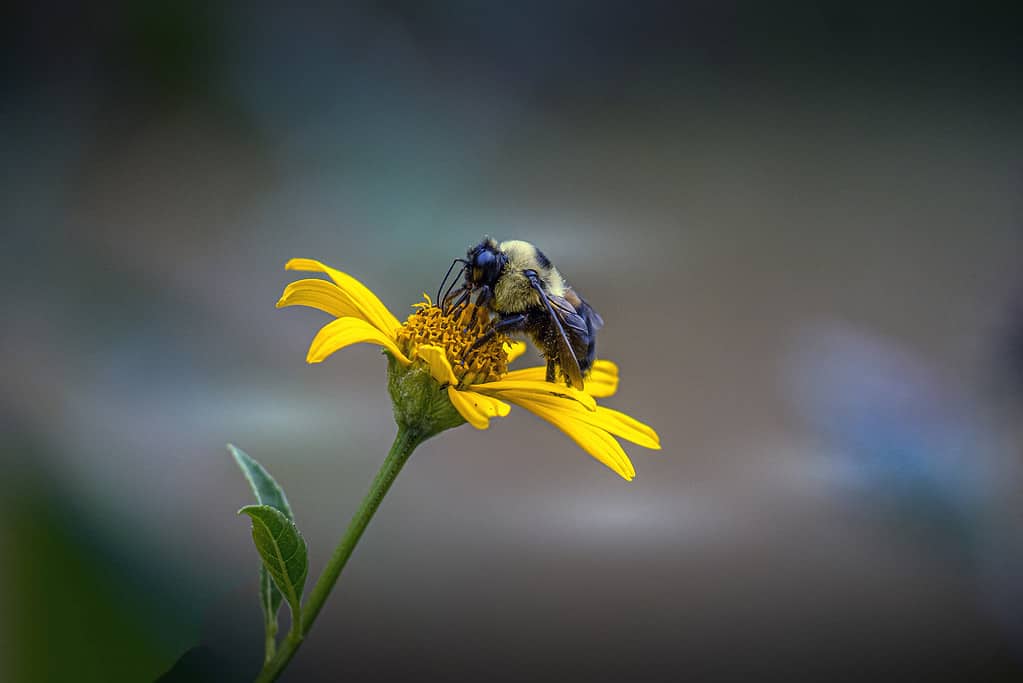
Bumblebees are better at pollinating than honeybees.
©johnandersonphoto/iStock via Getty Images
The bumblebee is a very common native pollinator in North America. The animals have fuzzy hair that is divided into black and yellow stripes. They effectively pollinate fruit and vegetable crops around the country. They use the pollen from plants to feed their young and the adults eat nectar. The bumblebees use corbiculae (small pouches) on their hind legs to store and spread pollen.
Mason Bee (Osmia caerulescens)
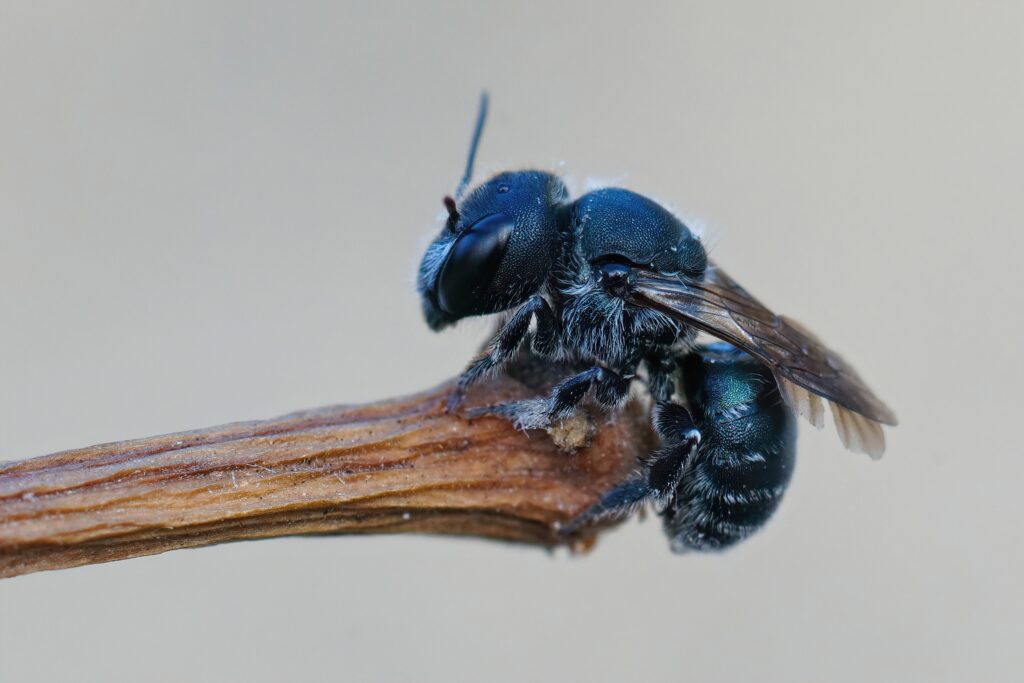
Mason bees are gentle and do not sting unless provoked.
©Wirestock Creators/Shutterstock.com
Another native pollinator, the mason bee, is common in North America. The animals are medium-sized and come in a variety of colors. The species uses mud, dirt, and clay to fill tiny gaps in wood or stone to build nests for their larvae. The animals fill the tiny pockets with pollen for their larvae before sealing off the babies so they can grow.
The bees pollinate a variety of flowers and plants. They are more effective than honeybees and are more docile as well. They carry pollen on their thorax and drop it on every flower that they pass.
Sphinx Moth (Family Sphingidae)
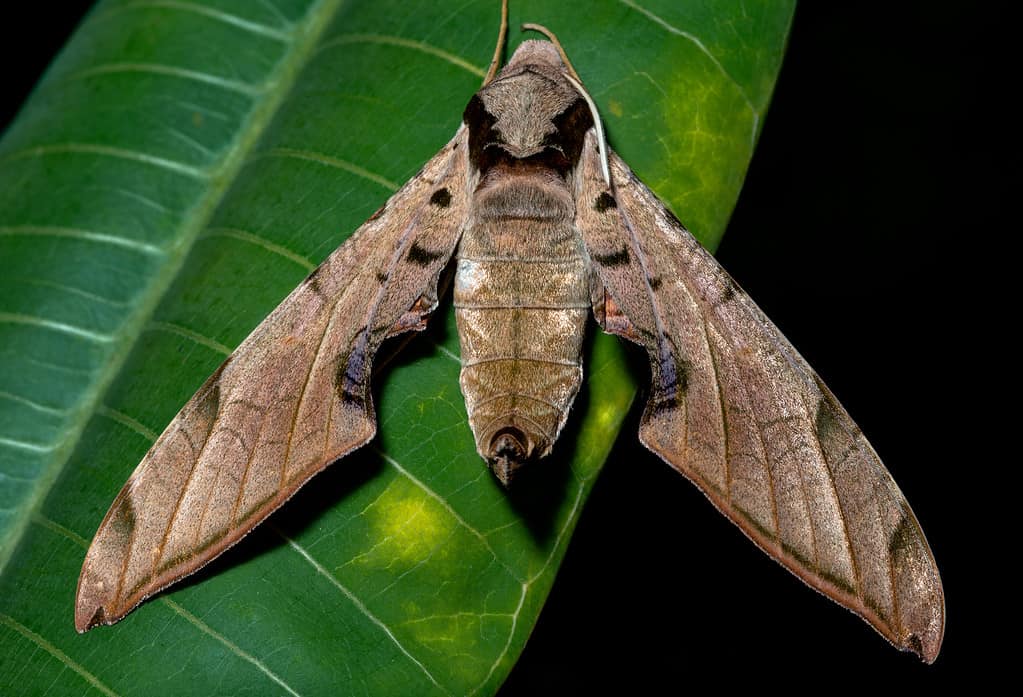
Night-blooming flowers rely almost solely on moths.
©iStock.com/Daynjer-In-Focus
The sphinx moth appears in the late afternoon and evening to visit night-blooming flowers. The animals have special tongues that sip nectar called proboscis, which can be longer than 11 inches in some varieties. The family of moths gets their nectar from many different tube-shaped flowers. These include:
- Butterfly bush
- Datura
- Evening primrose
- Flowering tobacco
- Honeysuckle
- Verbena
Lesser Long-Nosed Bat (Leptonycteris yerbabuenae)

Long-Nosed bats use echolocation to communication and find food.
©Momotarou2012 / CC BY-SA 3.0, Wikimedia Commons – License
The lesser long-nosed bat is another important native North American pollinator. The bat species has a long, narrow snout that ends in a small triangular nose. They also have a tongue with a number of adaptions, including long ridges and rough papillae. Lesser long-nosed bats use the tongue to lap nectar from flowers twice during the night. Once after dusk and once just before dawn. The animal migrates from Mexico into Arizona, New Mexico, and Texas every spring. The species eats the nectar from flowers that open at night, are large in size, and are very fragrant. Many fruits, including mangos, bananas, and guavas, depend on these bats for pollination.
Green Sweat Bee (Agapostemon texanus)
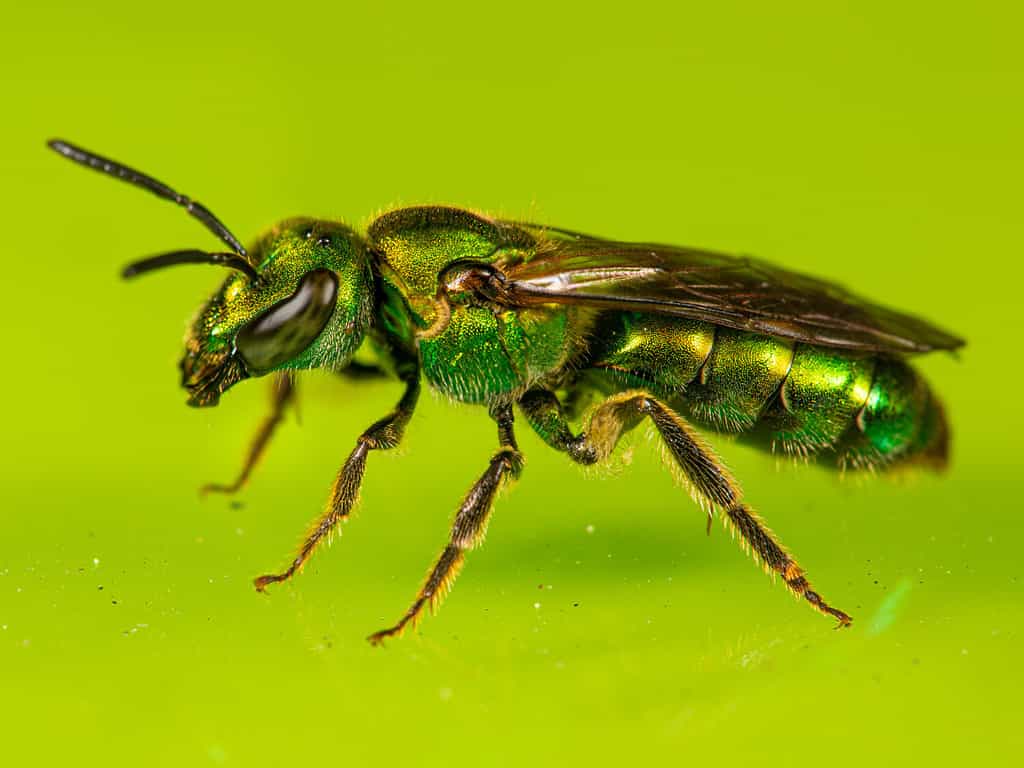
Pure green sweat bees are active from February to November, but their peak season is between April and October.
©Justin Starr Photography/Shutterstock.com
Among pollinators within the U.S., there are many native bee species. One of those is the sweat bee. The bees get their name from their attraction to perspiration, since they need extra salt to stay alive. The animals have a relatively mild and painless sting. Plus, they do not have teeth. The animals pollinate a variety of flowers and agricultural crops and are a great addition to gardens.
Eastern Carpenter Bee (Xylocopa virginica)
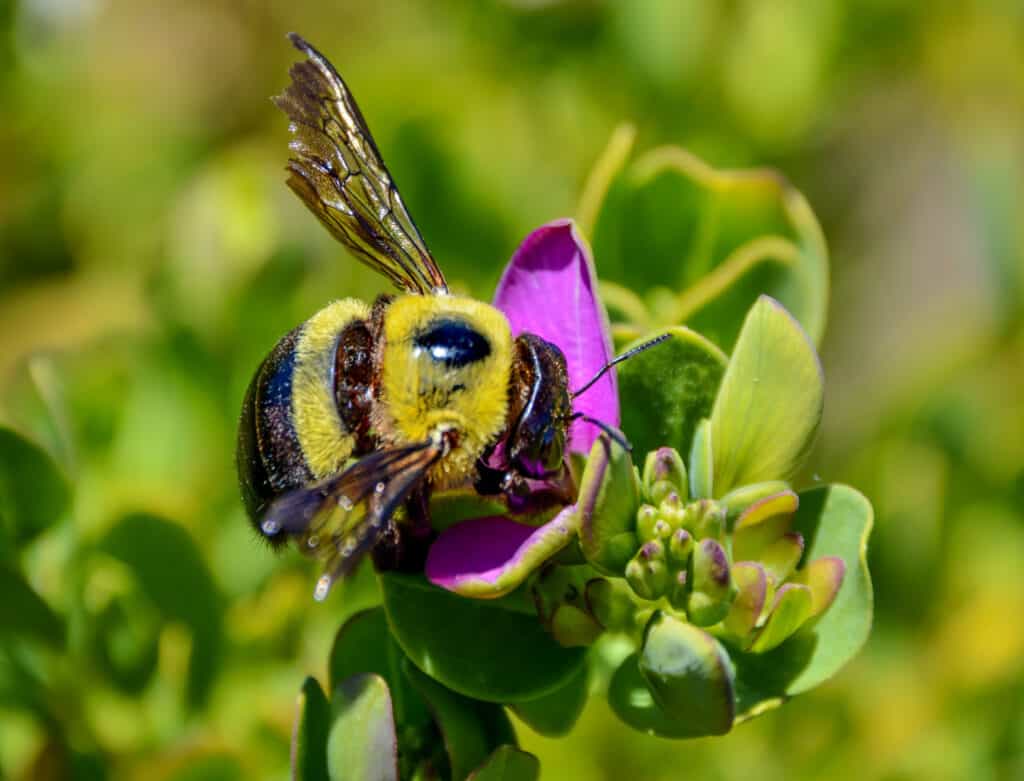
Carpenter bees come in a variety of sizes.
©Cathy Withers-Clarke/Shutterstock.com
The Carpenter bee is an essential North American native pollinator. Certain subsections of the species can be larger than pears. They are quite colorful and nest in large, hard wood. Sometimes, the animals choose telephone poles, fallen logs, and home decks to nest in. The animals are not aggressive and tend to be solitary. They pollinate wildflowers, fruit trees, and garden plants. The animals also help encourage new flowers to grow each season.
White-lined Sphinx Moth (Hyles lineata)

The caterpillars enjoy a variety of flowers and plants.
©Wallenrock/Shutterstock.com
While within the Sphinx moth family, the white-lined moth is separate from the rest. This native North American pollinator feeds during the daytime. It will hover in front of flowers and take nectar using it’s
While within the Sphinx moth family, the white-lined moth is separate from the rest. This native North American pollinator feeds during the daytime. It will hover in front of flowers and take nectar using its probiscis, or tongue specifically for drinking nectar. The animal has a striped and checked body with white lines on the forewings. On the hindwings are broad pink stripes. In addition to plants that other members of the family feed on, the white-lined Sphinx moth feeds on:
- Columbine
- Four-o’clocks
- Hosta
- Moonflower vine
- Nasturtium
The moth will use grapevine, honeysuckle, and poplar to host its larvae. They will feed on the plants then grow into adults and become important pollinators for the North American ecosystem.
The photo featured at the top of this post is © Public Domain – License / Original
Thank you for reading! Have some feedback for us? Contact the AZ Animals editorial team.







